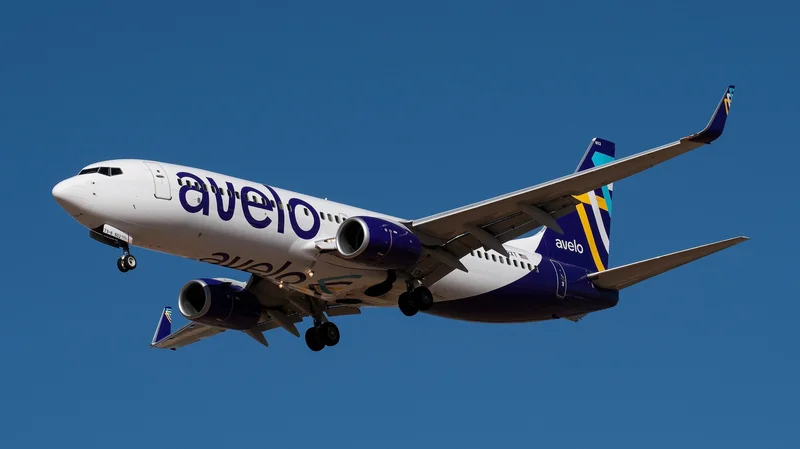Title: Avelo's Shell Game: FAA Cuts a Convenient Excuse for a Failing Strategy?
The FAA's mandated flight reductions at major airports like Orlando (MCO) and Tampa (TPA) are being presented as a potential boon for smaller players like Lakeland Linder International Airport. The narrative is simple: big airports squeezed, smaller airports benefit as airlines seek alternatives. But before we jump on that bandwagon, let's dig a bit deeper, shall we?
Lakeland: A Temporary Respite or Long-Term Play?
Lakeland Linder's airport director, Kris Hallstrand, is publicly optimistic. She's talking about "mitigating the impact" of airspace reductions and positioning Lakeland as an "alternative airport." Avelo, for its part, is offering the usual corporate platitudes about "thoughtful schedule changes." But here's the thing: Avelo already serves eight destinations from Lakeland, and none of those are impacted by the FAA cuts. So, what's really going on? Are we looking at a genuine strategic shift, or just a PR spin designed to mask deeper problems?
The key difference, of course, is the air traffic control situation. Lakeland Linder's tower is staffed by RVA Robinson Aviation, a contractor whose employees, crucially, are still getting paid during the government shutdown. Meanwhile, TSA officers at Lakeland, who operate out of Tampa, are working without pay. Hallstrand paints a rosy picture of their dedication, and I'm sure they are dedicated. But let's be real: unpaid labor isn't a sustainable business model. And it hardly seems like a selling point for attracting additional flights.
The Bradley Debacle: A Pattern Emerges
This brings us to the Avelo situation in Connecticut. Just weeks prior, Avelo announced it was pulling out of Bradley International Airport, citing poor financial performance. The Connecticut Airport Authority (CAA) didn't mince words, accusing Avelo of "misrepresenting facts" and dodging fees. They pointed out that Avelo had received significant subsidies and incentives, yet still failed to make the routes profitable. The CAA even suggested that Avelo's involvement with ICE deportation flights might have contributed to a negative public perception, impacting demand.
And this is the part of the report that I find genuinely puzzling. The CAA highlighted that Avelo's Houston route from Bradley showed a 70% load factor in November, spiking to nearly 96% in December, yet Avelo still canned the service in January. The Montego Bay route also showed "increasingly strong performance," according to the CAA, but it's getting the axe too. What gives?

Is Avelo simply incompetent at managing routes, or is there a more deliberate strategy at play?
Avelo's official explanation for leaving Bradley – "the revenues on the market did not cover the costs" – rings hollow when you consider the CAA's accusations of fee-dodging and incentive-grabbing. It's like a company complaining about high rent while simultaneously trying to skip out on their lease. (Parenthetical clarification: Avelo apparently asked to be relieved of its contractual obligation to pay rent for the remainder of its agreement at BDL.)
The Bradley situation casts a long shadow on the Lakeland narrative. Are we seeing a pattern here? Avelo swoops in, grabs incentives, makes grand promises, and then bails when things get tough, blaming external factors or "lack of demand"?
The Illusion of Opportunity
The FAA cuts, therefore, might be less of an opportunity for Lakeland and more of a convenient excuse for Avelo to shuffle its deck chairs. It allows them to appear proactive and responsive while quietly addressing underlying issues with their business model. The exact details of how this could impact the number of flights in or out of Lakeland Linder were not available as of Nov. 6, according to reports. But that lack of data is telling in itself. If this was a genuine strategic shift, wouldn't Avelo be shouting it from the rooftops?
Perhaps Avelo will use Lakeland as a temporary overflow valve, soaking up displaced flights until the FAA restrictions lift. Or maybe they'll quietly scale back their operations, using the FAA cuts as cover. Either way, I'm not buying the "Lakeland boom" narrative just yet. The data suggests a more cautious interpretation is warranted.
A Smokescreen for Deeper Turbulence
Avelo's history suggests these FAA cuts are a convenient scapegoat, not a springboard for Lakeland's success.
